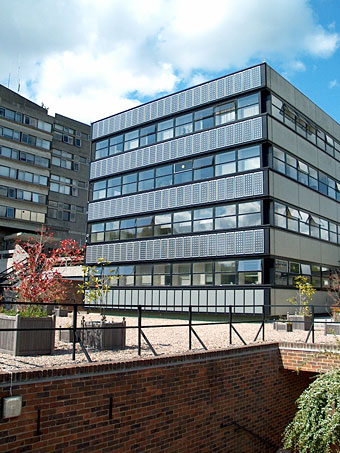Silicon wafer solar cells have a low working voltage (~0.5 V) and so must be connected electrically in series to become useful. A ‘standard’ PV module consists of 36 cells in series, producing a maximum power point voltage of ~18 V suitable for charging a 12 V dc battery with a charge regulator.

Measured difference in dc power of the ‘strongest’ and ‘weakest’ string on the Southampton University Building 2 PV façade.
Grid connected PV systems work at much higher dc voltages (typically 300-550 V dc) and so consist of large numbers of PV modules connected in series to produce ‘strings’. Multiple strings may then be connected to one or more inverters at a central plant room. High voltage strings are attractive for installers because they simplify the wiring scheme, reducing cost and making the installation process easier. There is, however, a potential drawback to very long strings in PV systems – mismatch (see top figure).
Every solar cell wafer produced has a slightly different I-V characteristic. Cells are often sorted to ensure that a typical 36 series cell module has the correct I-V profile. Connecting a ‘strong’ and a ‘weak’ module together constrains the output of the ‘strong’ module to the level of the ‘weaker’ one.
This creates a problem: increasing the length of strings inevitably leads to a greater level of mismatch and therefore, energy loss. Theoretically it is best to have an inverter for each and every solar cell (not realistic) and such a system would produce more power than a single central inverter. (Assuming the power consumption and efficiency curve profiles of the two inverter systems are identical).
In reality there are three possible options for a PV array:
- AC Modules – A micro-inverter mounted on the back of each PV module
- String Inverter – Each string from an array goes to its own dedicated inverter
- Central Inverter – A single inverter taking all the strings (parallel or serial from the array)
An investigation of mismatch effects on a 24 string array at the University of Southampton has been undertaken. Building 2 has a vertical 7.2 kWp SW facing array, consisting of 96 BP275 mono-crystalline PV modules, configured as 24 strings, each consisting of 4 modules in series. The system can be reconfigured in the plant room as required to operate the array in either central inverter or string inverter mode. Individual 4 module strings have been ranked in terms of dc power to enable the effect of dc power matching on mismatch to be determined. The array has been operated in a range of scenarios with six string inverters (SMA700), each taking 8 modules in series and one small central inverter (SMA2500).
Taking into account the difference in inverter efficiency and inverter internal power consumption the effect of mismatch loss can be quantified. Analysis indicates that mismatch typically represents a power loss of less than 3% between a central inverter and a string inverter configuration. This loss could be reduced still further if an AC module approach was taken. However, AC modules do bring an additional set of problems, particularly due to their inaccessibility for repair in commercial building facades.
[portfolio_slideshow id=1293]
Detailed results have been published in:
James P.A.B., Bahaj A.S. and Braid R.M. (2006) PV array < 5kWp + Single inverter = Grid connected PV system: are multiple inverter alternatives economic? Solar Energy, Volume 80, Issue 9, September 2006, pp 1179-1188. view paper
Bahaj A.S. Braid R.M. and James P.A.B. (2002) Post installation optimisation of a building integrated PV system at Southampton University. Proceedings of the 29th IEEE PV Specialists Conference, New Orleans, USA, 21-24 May 2002, pp 1561-1564. view paper
